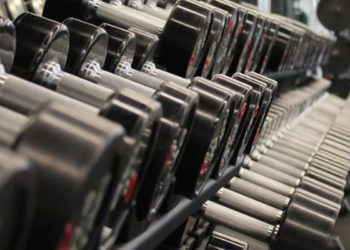Hip replacement superior to resistance training in severe hip osteoarthritis
1. In this randomized controlled trial, total hip replacement (THR) was superior to resistance training in improving hip pain and function in patients with severe hip osteoarthritis.
2. The incidence of adverse events was comparable between the THR and resistance training groups.
Evidence Rating Level: 1 (Excellent)
Study Rundown: Hip osteoarthritis is increasingly prevalent in an older population, associated with significant disability and quality of life impairment. THR is an effective procedure in relieving pain and restoring function for hip osteoarthritis and more than 1 million THRs are performed annually. Resistance training is commonly recommended as a nonsurgical approach to manage hip pain and improve function. Nevertheless, data comparing the effectiveness of the two approaches for hip osteoarthritis is lacking. This was a randomized trial comparing THR against supervised resistance training in patients with severe hip osteoarthritis. By six months, the THR group demonstrated significantly better outcomes regarding hip pain and function compared to the resistance training group. An appreciable proportion of patients assigned to resistance training also underwent THR by six months. Both groups had similar rates of adverse events, most of which were known complications from THR. Despite being limited by a non-blinded design and under-enrolment of eligible patients, these results demonstrated the superiority of THR over resistance training in improving pain and functional outcomes in severe hip osteoarthritis.
Click here to read the study in NEJM
In-Depth [randomized controlled trial]: This is a multi-center, randomized, controlled trial comparing THR with resistance training in the treatment of severe hip osteoarthritis. Patients 50 years of age or older, who had severe hip osteoarthritis clinically indicated for THR as assessed by an orthopedic surgeon, were eligible for inclusion. Exclusion criteria included severe walking deficits, a body-mass index greater than 35, fracture in the lower limb in the last 12 months, cancer with concurrent oncologic therapy, or neurologic disorders. 109 patients (mean age 67.6 years) were randomized 1:1 in a non-blinded manner to undergo THR or participate in a supervised resistance training program. THR was performed in adherence to a fast-track surgical program encompassing preoperative counseling, multimodal pain management, and early mobilization. Resistance training was carried out by physiotherapists for 12 weeks, followed by an optional 12-week extension. The primary outcome was a change from baseline in patient-reported hip pain and function at 6 months assessed using the Oxford Hip Score (OHS), with higher scores indicating less pain and higher function. As per intention-to-treat analysis, the mean increase in the OHS was 15.9 points for patients in the THR group and 4.5 points in the resistance training group (difference 11.4 points, 95% confidence interval [CI] 8.9-14.0, p<0.001). Similarly, individual assessment subscales of patient-reported pain, functional status in ADLs and exercise, and HRQOL also significantly favored the THR group over resistance training (p<0.001). Notably, at six months, five patients (9%) in the THR group had not undergone surgery while 12 patients (21%) of patients assigned to resistance training had had THR. By 24 months, 43 patients (77%) from the resistance training group had undergone THR. Overall, the rates of adverse events were comparable between the two groups (12% for THR and 9% for resistance training), with most being known complications of THR such as prosthetic joint infection, revision surgery, atrial fibrillation, and drop foot. Nevertheless, these results demonstrated the superiority of THR over the nonsurgical resistance training approach in improving pain and functional outcomes in patients with severe osteoarthritis.
Image: PD
©2024 2 Minute Medicine, Inc. All rights reserved. No works may be reproduced without expressed written consent from 2 Minute Medicine, Inc. Inquire about licensing here. No article should be construed as medical advice and is not intended as such by the authors or by 2 Minute Medicine, Inc.







